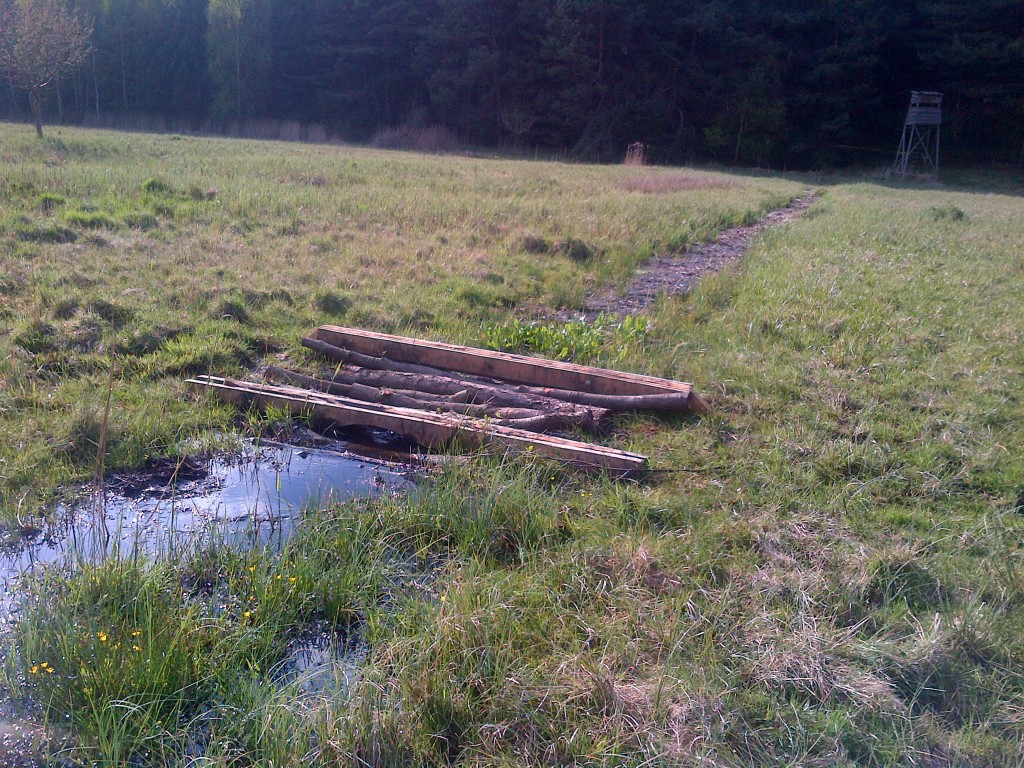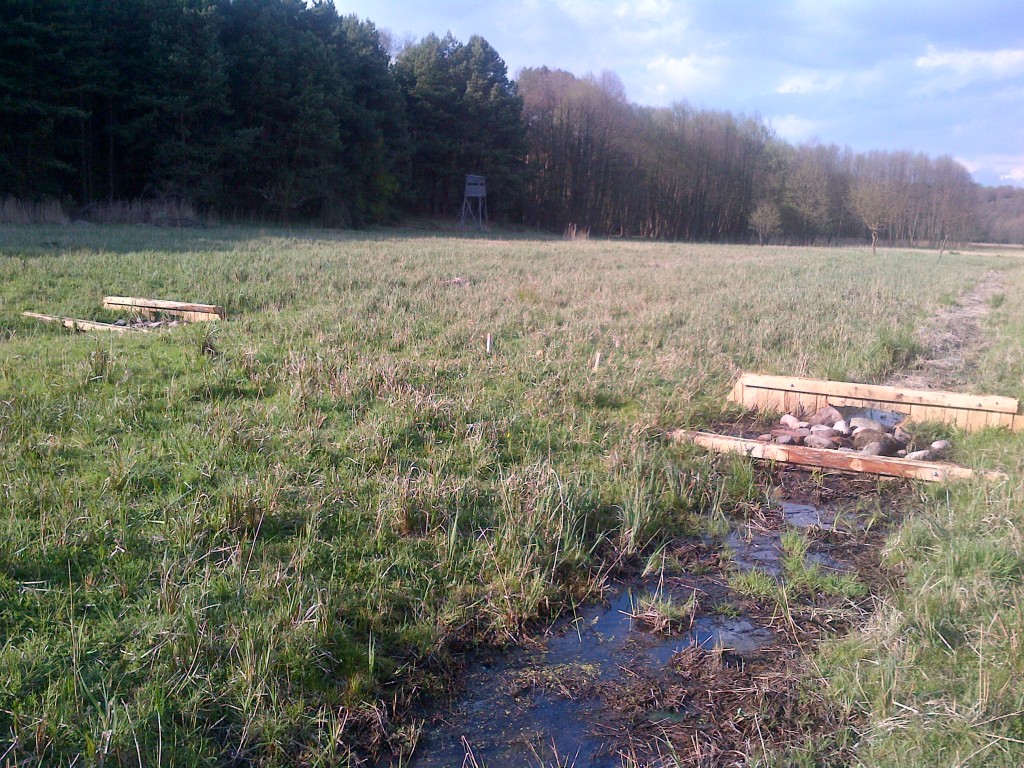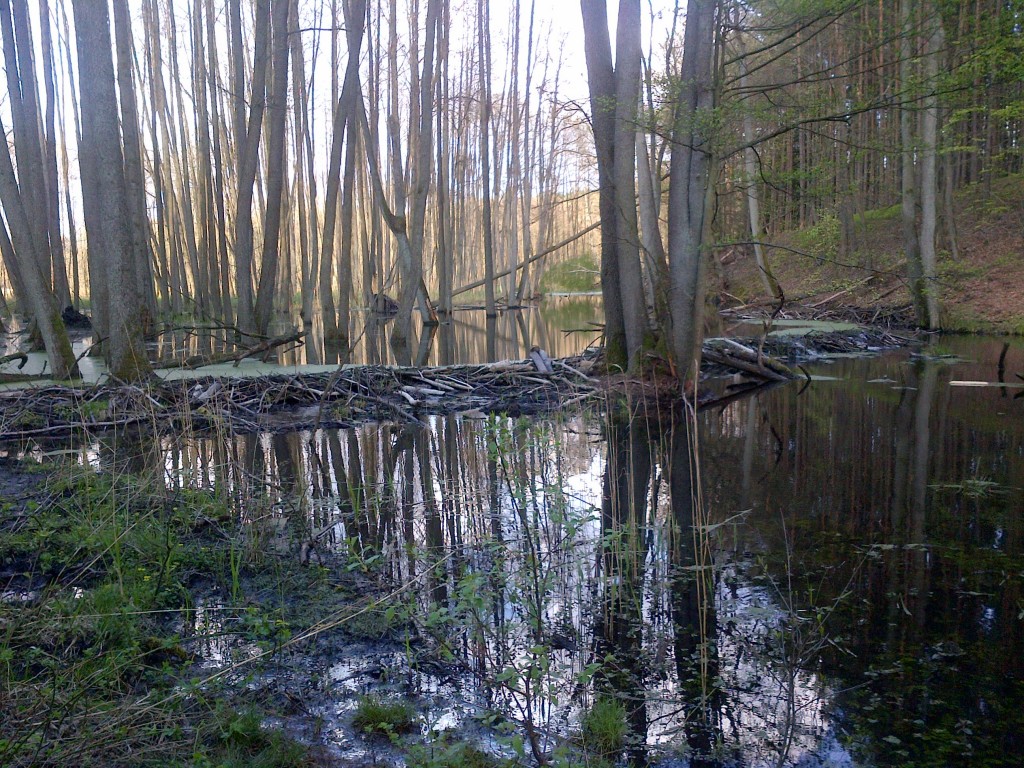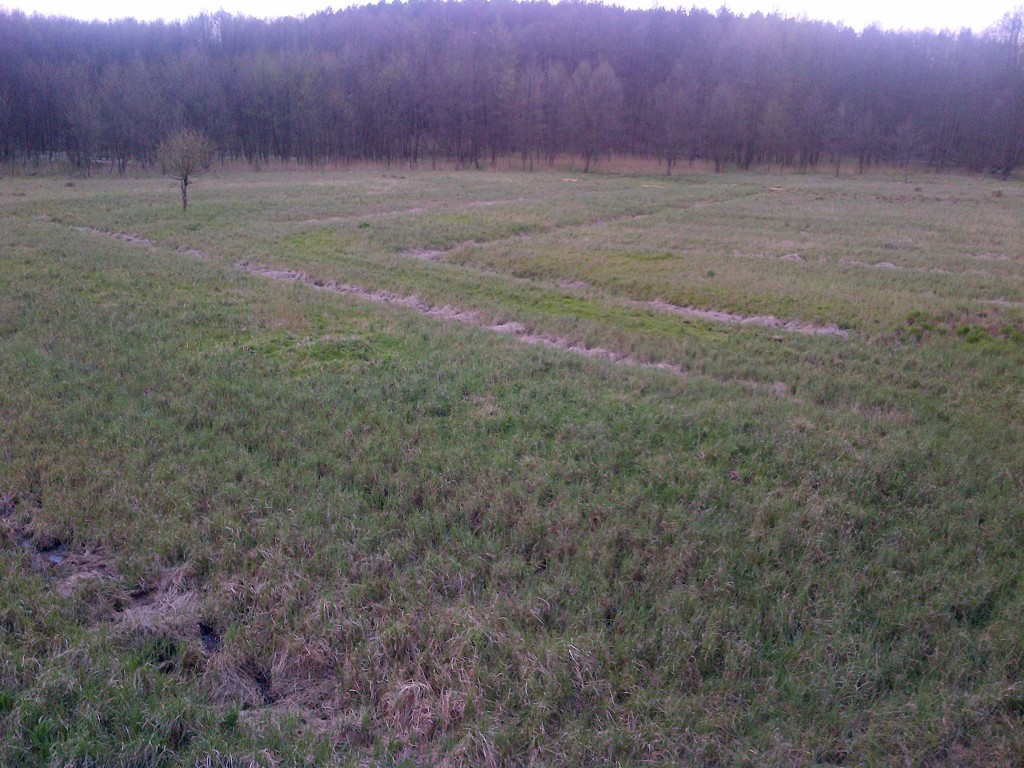We built first dams
In the Pliszka Valley on the Kosobudki fen were built first dams designed to improve the hydrological conditions on the fen. During the workshop, which took place in July 2014, we personally have done two of them. Currently under contract for construction works were built other 17. Number of active ditches on the fen is so significat that it is now a place where the number of scheduled and completed dams is the greatest. It is obvious that they aim to raise the water level, however, the planned damming and position of the valves has been designed so that surface water floodingdo do not occurs.
On the hydrological network of Kosobudki fen consists of Pliszka river and numerous, overgrown drainage ditches arranged in a transverse relation to the river Pliszka. Part of side ditches occurs parallel to the river. Ditches occurring on the plot degraded in terms of usefulness for agriculture. The total length of these ditches is more than 3.3 km. Water conditions since the amandonment of regular maintenance of ditches are slowly improving. In the last 3 years within the fen we observe a gradual rise in water level associated with the construction of the beaver dam on the river Pliszka and construction of other small beaver dams on the drainage ditches there. The process is confirmed by the water fluctuation readings from the automatic recorders (diver).
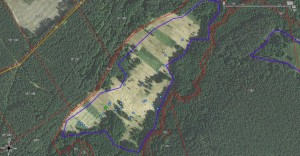
Approximate location of dams. Aerial image displayed on a dense network of ditches crossing the fen.
The dam design is very simple – it’s about minimizing the costs of their construction but also to ensure that the same buildings over a certain time will blend into the landscape and overcome natural process of decomposition. The idea is that eventually blocked ditches will overgrow and no longer drain the area, will naturally decay and their maintenance will not be necessary. The construction of this type of valves therefore consisted in making sheet piling, wooden and walls of the pressure at a distance of approx. 1.5 m apart and laying the rip-rap between them or with locally obtained loose organic material constituting a total of one object. The work consisted in creating the wooden tight sheet piling with light overflow at a constant elevation impoundment. From the lower water we formed a cascade made of logs with a diameter of approx. 20 cm or rip-rap or stakes. The maximum height of overflow light does not exceed 1.0 m. It is important to tightness of the construction, especially at low flows. Small leaks in time are eliminated as a result of swelling of wood remaining in the water. The last element of the construction of the wall is suitable shaping of the overflow light. It is always in the middle of the ditch and is so formed that during the significant inundations water overflowed only though the overflow light, not sideways, which could cause washes out the structure and the weakening of its functions. The best results are achieved through a cascade of multiple dams with a small (several dozen cm) stacking than by building one larger dam.
And so it looks in reality:
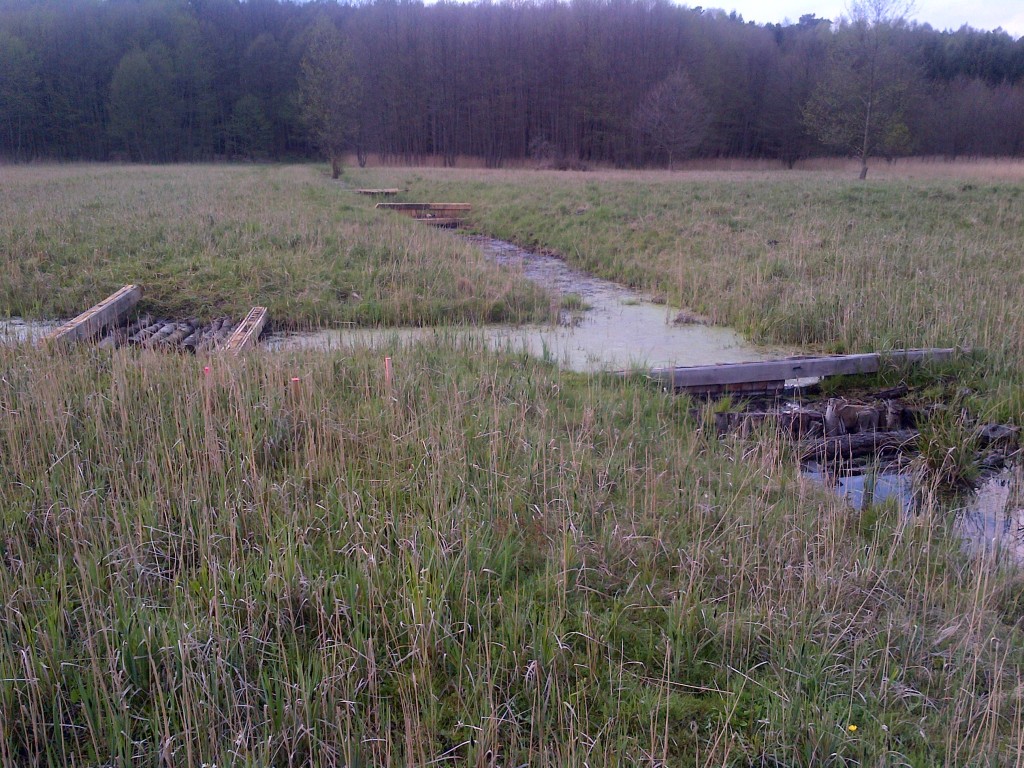
this picture clearly shows that the level of dammed water does not exceed the level of the ground – there is no flooding the fen surface.
This text is also available in: PL



